This week I’m taking a break from writing about gardening to tell about an experience I had recently picking up trash along the Missouri River. The title of this post comes from Jayber Crow, by Wendell Berry:
“The river and the garden have been the foundations of my economy here. Of the two I have liked the river best. It is wonderful to have the duty of being on the river the first and last thing every day. I have loved it even in the rain. Sometimes I have loved it most in the rain.”
If you’re like me and spend a lot of time outdoors walking or running, no doubt you see trash everywhere. Even beautiful neighborhoods like mine have an appalling amount of litter. I make it a point to throw away at least one piece every time I go for a walk. I’ll pick a plastic bag out of some bushes or drop a water bottle into the garbage. Where does it come from? It blows out of the beds of pickups and drops off strollers, falls out of trash bins when the trucks lift them up, and—I hate to admit this but it’s true—gets thrown out of the windows of passing cars. I don’t like thinking that my fellow Americans would do this, but they do. Eventually it all makes its way to our rivers. In 2019 we were walking in Weston Bend State Park after the floodwaters receded and were shocked to see the banks blanketed with plastic bottles. Before that I knew, but didn’t really know, how immense the problem is. But usually I feel powerless to do much about it.
On Friday I happened to see a guest essay in the Star about Missouri River Relief, a group sponsoring a cleanup of the Missouri River. The cleanup was taking place the next morning. Although registration was closed, I showed up at the River Front Park boat ramp (which I never knew existed before) at the civilized start time of 9 AM to help out.
Since 2001, this group has removed tons of junk from the banks of the Missouri River through organized cleanups. I signed in, received a complimentary water bottle and t-shirt, and headed over to orientation, where a conservation agent was finishing up by saying a tangle of fishing line would take 600 years to decompose. At the next station, Steve Schnarr, River Relief’s Director, went over some safety rules and prepared us for what we could expect to encounter—how to handle syringes and potentially hazardous chemicals, how to recognize poison ivy. “If you take a step and sink in mud, don’t step in with your other foot,” he said. Made sense. He warned that river carp are sometimes irritated by the boat motors and may leap out of the water and land in the boat.
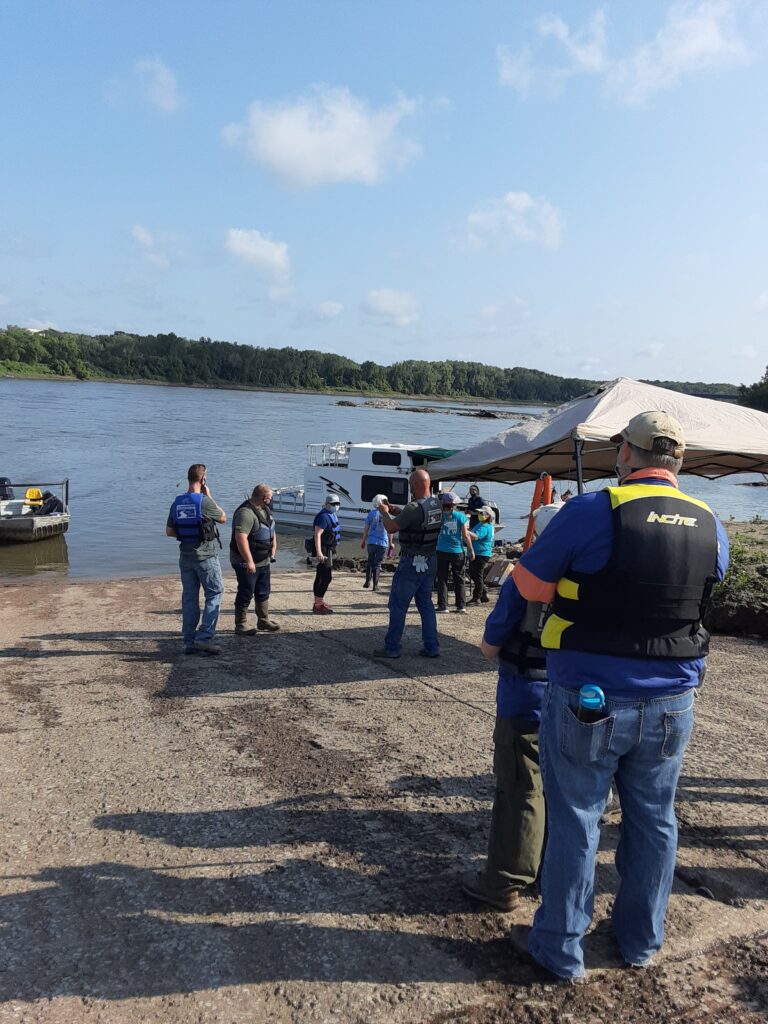
We put on life jackets and climbed into a low-floating metal boat, which ferried us upstream to a spot on the bank. Most of the volunteers came from area companies. I tagged along with a group from Bass Pro World. River Relief crew members had scouted the cleanup sites earlier to make sure they were accessible to the boats, weren’t near homeless encampments, and had lots of trash. No problem there. The water seems full of it. Red plastic cups and clear plastic bottles cruised by, carried by the current.
The river was busy with a flotilla of boats. I got out on the north bank just east of the I-29 bridge. Outfitted with a pair of gloves and a blue plastic trash sack, I climbed the bank and got busy. In almost no time, my bag was full. I found chunks of white Styrofoam and white drink cups, plastic water bottles, a piece of an old tarp. Most of the litter was regular household stuff—cough syrup bottles, a full gallon of Arizona iced tea. How did these make their way to the bank of the Missouri river? (See explanation above.)
What I did not find: aluminum cans, cigarette packets, plastic bags. I imagine we’d find millions of those if we picked up later in the year, when the foliage dies back for winter.
The bank was heavily shaded, and I did note some native plants flourishing in the dim light. These sedges resemble liriope and are unpalatable to rabbits.
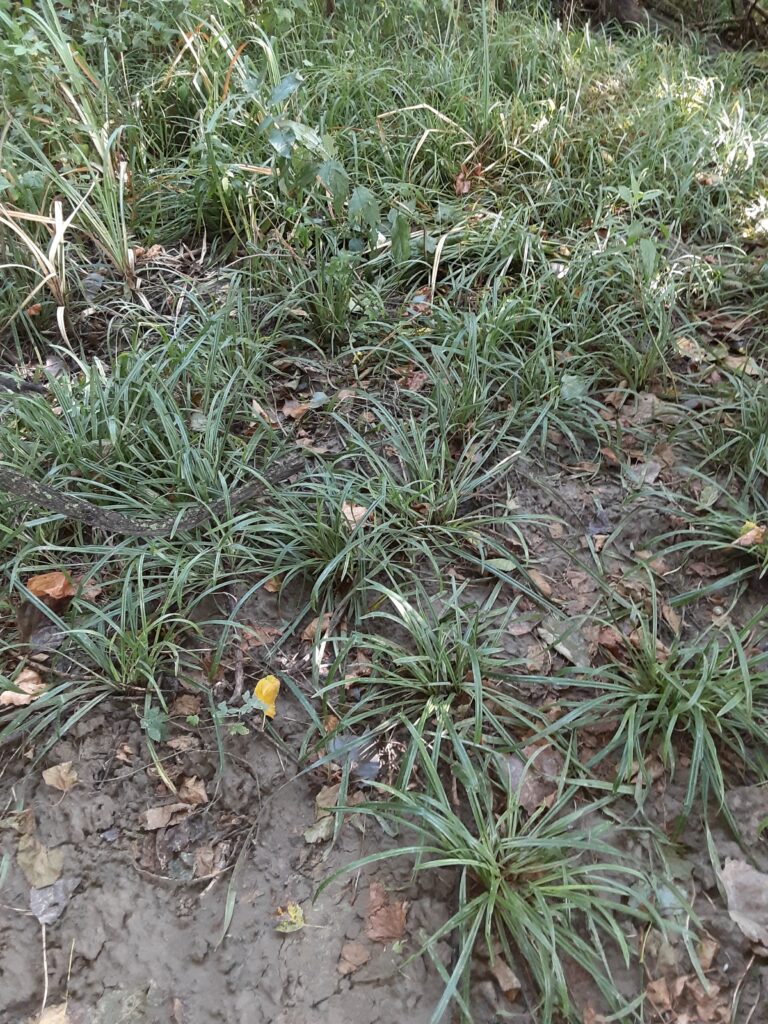
This was what it looked like beneath the trees with the river in the background.
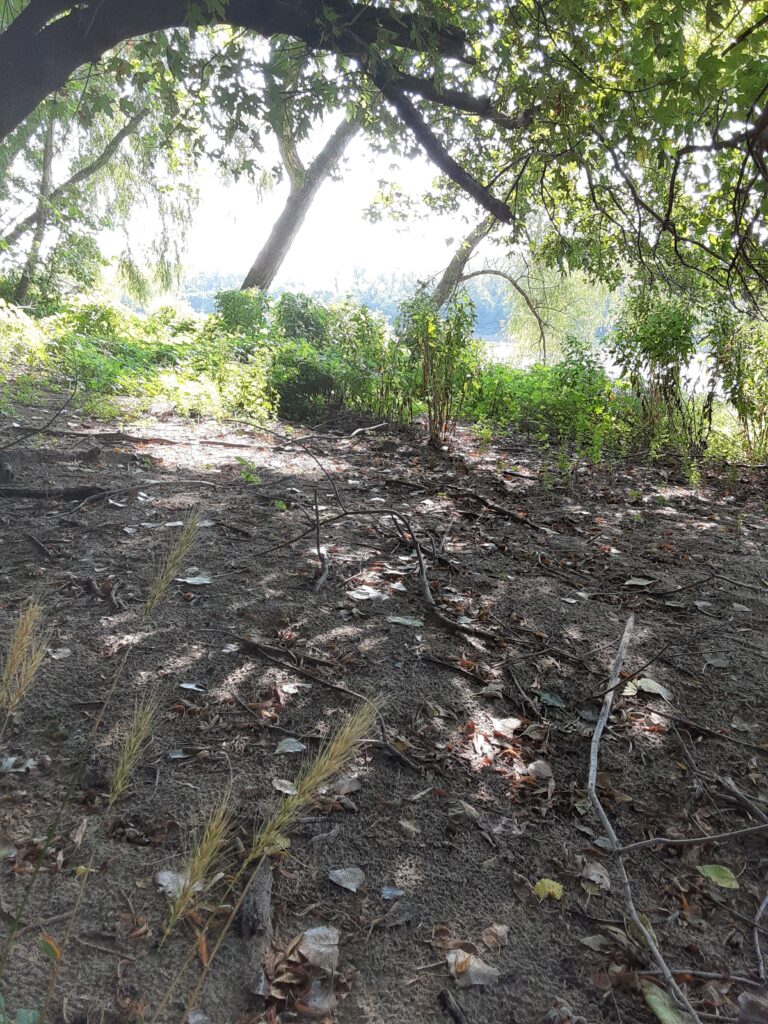
Notice how beavers have gnawed on this cottonwood trunk.
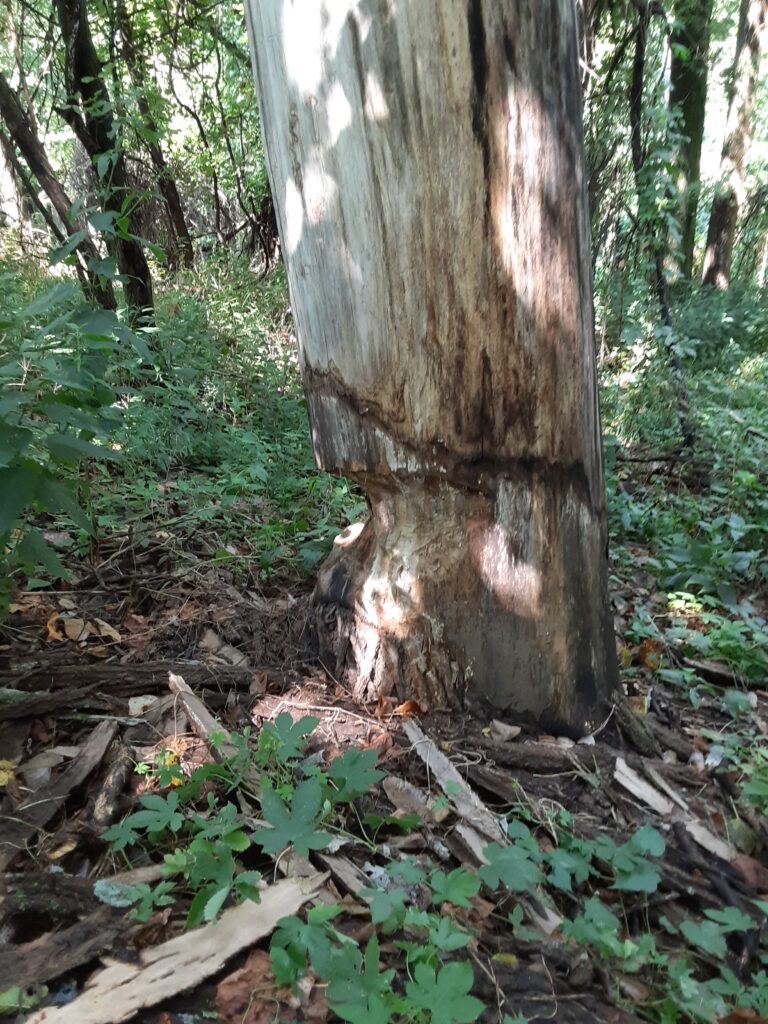
The banks were brushy with Horseweed and Queen Anne’s Lace. Surprisingly, I didn’t see any milkweed, although I spotted some solidago blooming.
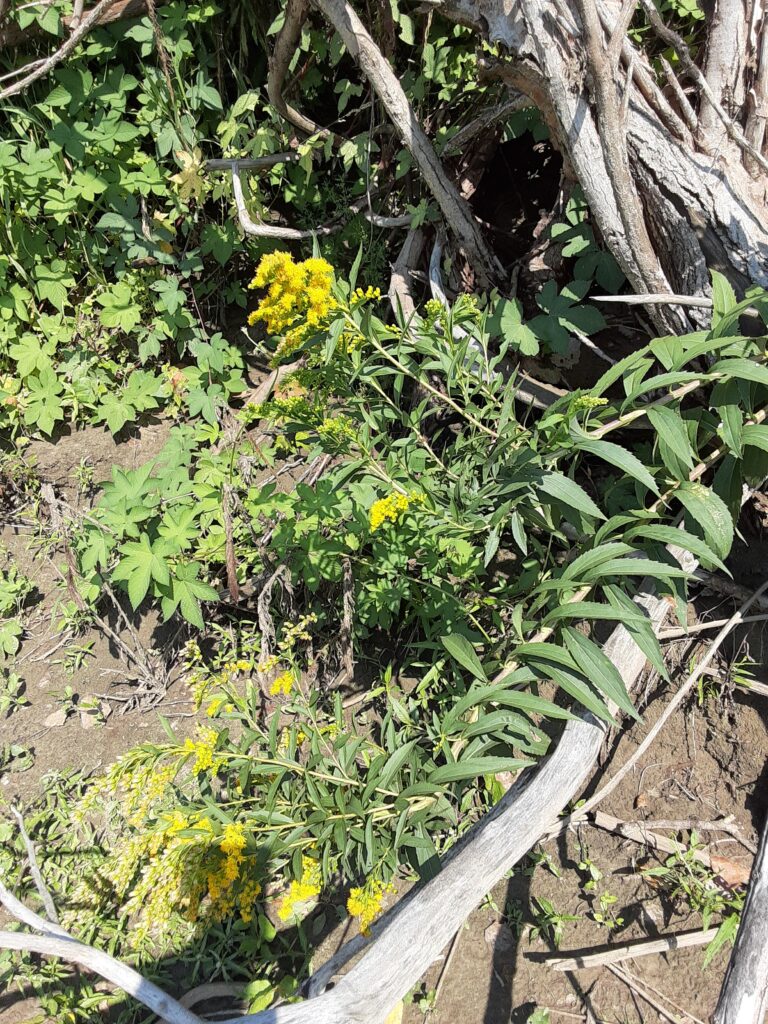
No milkweed and no butterflies. I didn’t see any animals, either. Now home, I see at least three monarchs flitting around my yard every time I look out the window. They remind me of a litter of puppies rolling around, playing. I am constantly surprised by how much more wildlife activity I see in our yard compared to out in the forests. (We live about a mile west of the Plaza.) We have butterflies, bees, wasps, squirrels, chipmunks, rabbits, opossum, raccoons, and all kinds of birds. There’s always something twitching around out there, but when we go out to the woods, they’re often still.
Whenever I thought I’d finished, that I’d removed all the trash from a section of the bank, all I had to do was stand back and look at it for a minute and I’d see more. The surface of the water was bumpy from all the debris floating by: new trash is being deposited constantly. I imagine for the fish, the water is an obstacle course of floating plastic.
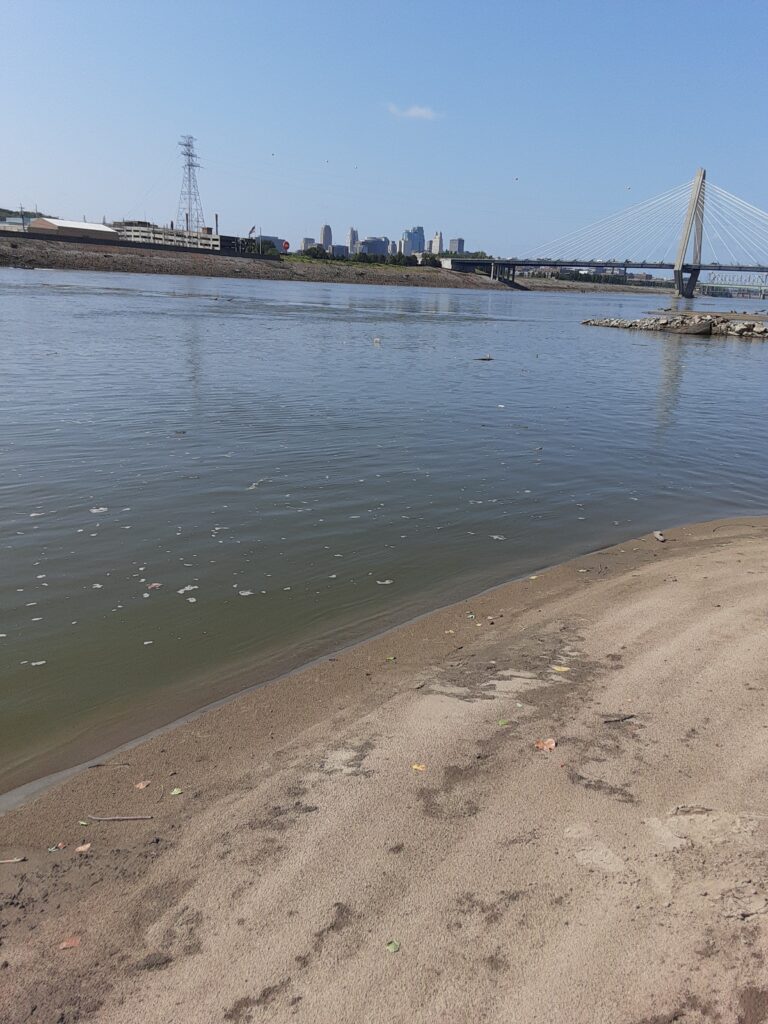
I only spent about an hour picking up trash before the boat came back to pick us up. (I’d expected to spend longer.) It always feels great to be on water, and the Missouri River is so powerful and mysterious. Now I’ve been out in it on a boat, which I’ve never done before. As the woman operating the boat slowed when we approached the shore, sure enough, an enormous carp leaped out of the water. I’m sorry I didn’t get a picture, but this photo from flickr shows what it was like. It looked like shot from a movie.
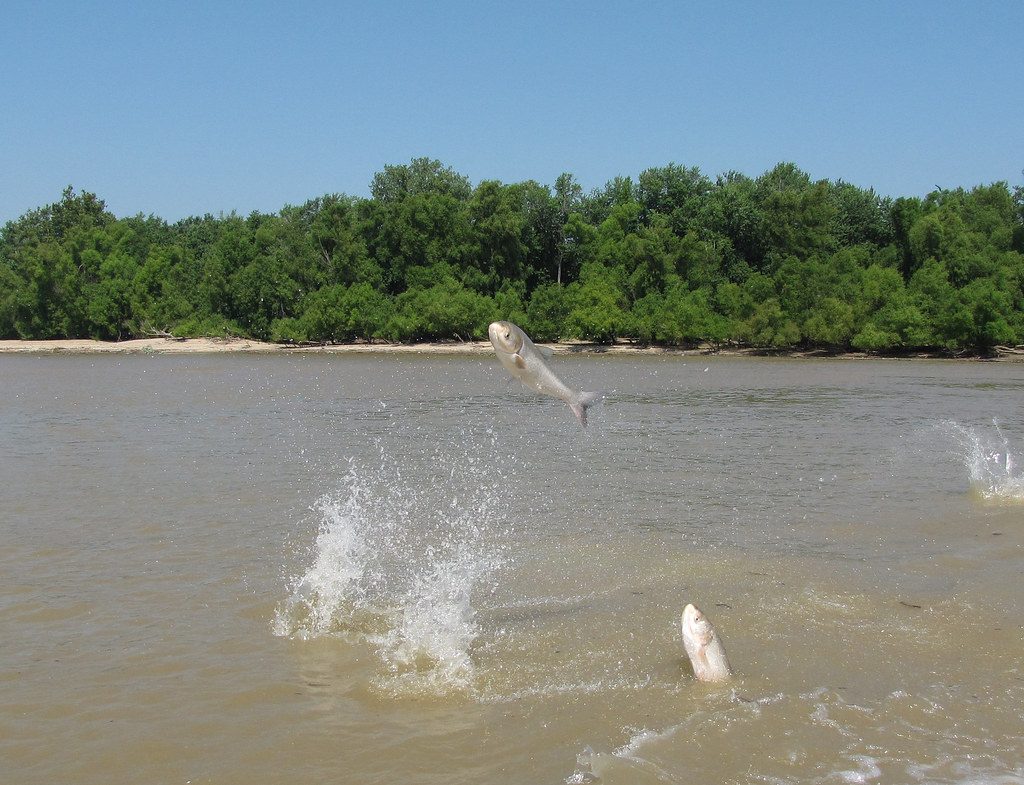
Back on shore, I nibbled some fried chicken and a biscuit from RC’s Fried Chicken, served up by some Rotary Club members in cardboard containers with no utensils. I inspected some of the items entered in the Trash Collecting Contest, whose categories included most weird, most likely to be used as a weapon, and most useful—won by an MU fleece blanket.
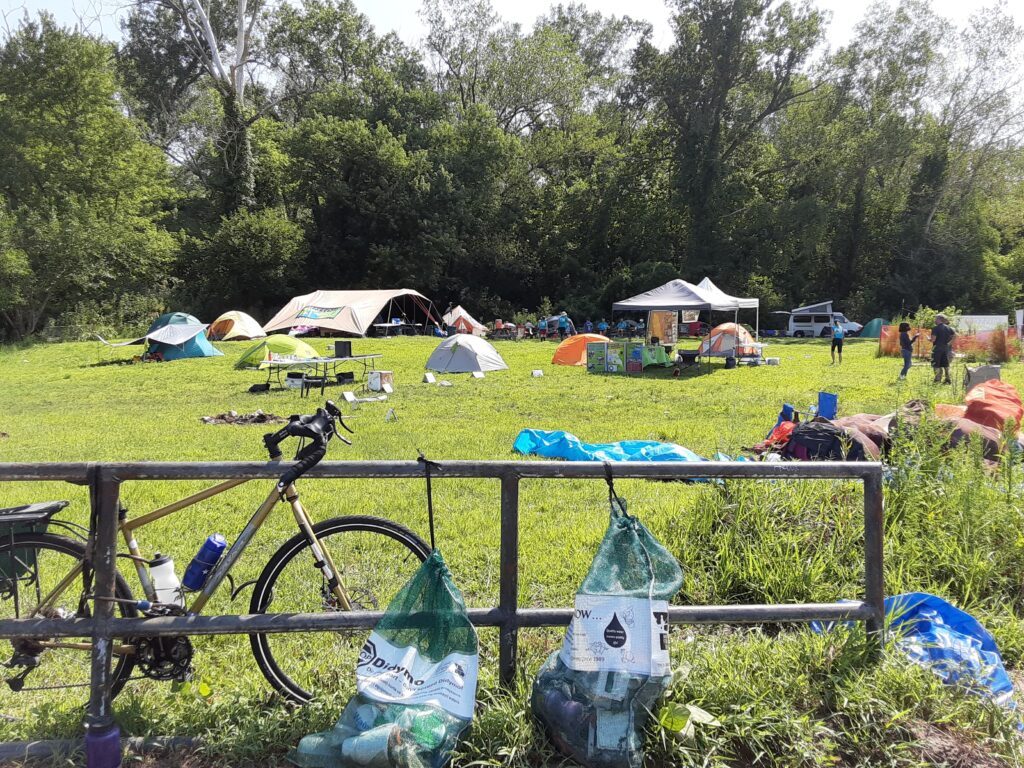
We’ve only been producing plastic for sixty years, and according to a 2017 article in Science Daily, “Of the total amount of plastics produced from 1950 to 2015, roughly half was produced in just the last 13 years.” For our purposes, plastic is forever: a plastic water bottle could take 450 years to decompose. As I drove home through downtown, watching people walking to lunch and coming home from the farmer’s market, I thought that if I could say anything to them it would be to throw their away their garbage. Recycling is great but the main thing is to get trash into the trash and off the street. My next thought was that we need more cleanups like these. If every scout troop, church youth group, stroller-pushing parent, jogger, person who strolls along Indian Creek on Saturday morning, if all of us spent an hour picking up trash, sadly it wouldn’t make much difference—but it would get us all thinking about the problem. Problems don’t go away on their own usually. The first step in solving them is understanding that one exists.
For the next two months, Missouri River Relief is celebrating their twentieth anniversary by holding cleanups on the stretch of river between Kansas City to Columbia. The next one will be on August 28 in Sibley, MO, with another in Lexington on September 1, 2021.

Thanks for sharing this great perspective Mary. So glad you could come and help out!
-Missouri River Relief (www.riverrelief.org)
Steve. I really enjoyed the day. Thanks for all you do.